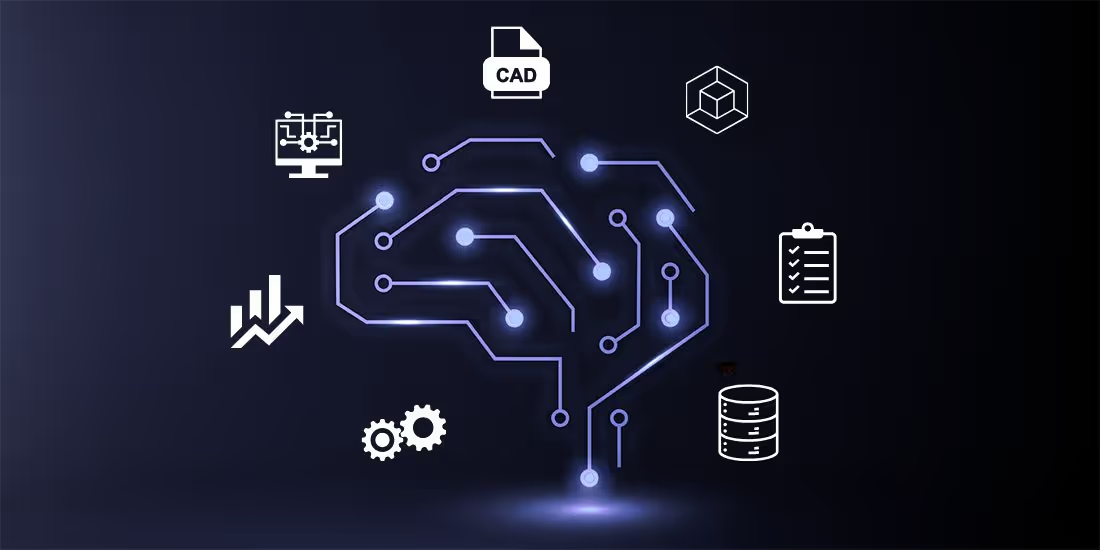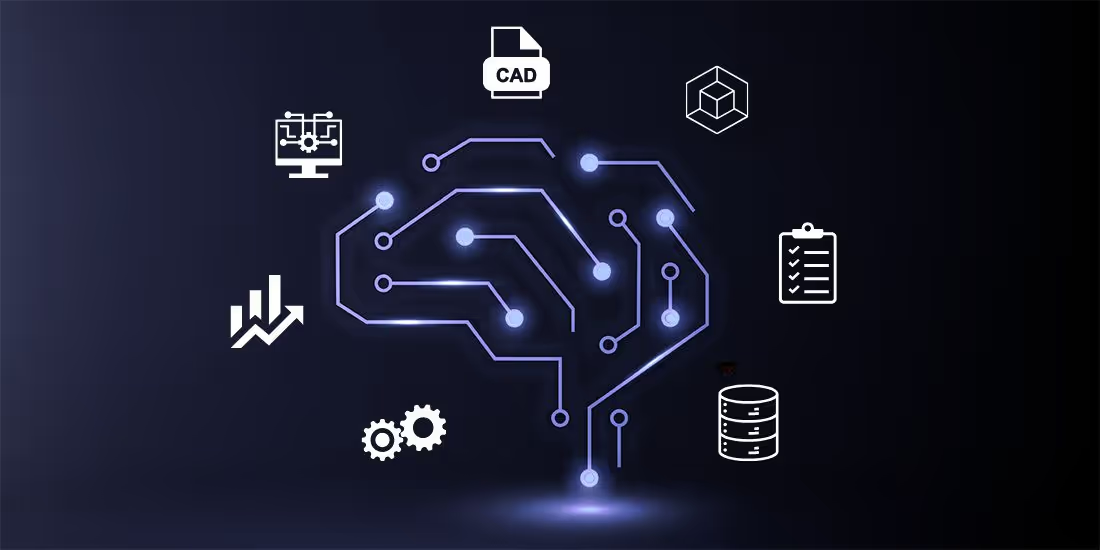How T4i Accelerated Their Engineering Workflow 10x For An Optimized Pressurized Tank

From Earth observation to communications and scientific research, small satellites and constellations are enabling new business models, faster deployment cycles, and greater mission flexibility. This shift is pushing aerospace companies to rethink how space systems are designed, built, and launched.
At the heart of this transformation lies propulsion: a core enabler of mobility, maneuverability, and mission longevity in orbit. For new propulsion system providers like T4i, the challenge is to deliver compact, high-performance solutions that fit within the extreme size, weight, and cost constraints of CubeSats and small satellites. Every component must be optimized for multifunctionality, structural integrity, and manufacturability, often in a fraction of the time allowed by traditional aerospace development cycles.
This case study explores how T4i leveraged Cognitive Design to divide by 10 the development cycle of a pressurized aluminum tank designed to operate within a 1U CubeSat envelope and withstand high internal pressures. By integrating structural performance objectives and additive manufacturing constraints into a single AI-driven Generative Design workflow, T4i was able to rapidly explore, evaluate, and optimize complex internal geometries. The result: a structurally robust, lightweight, and print-ready tank design, delivered in a fraction of the time typically required with traditional CAD and simulation tools.
.avif)
Results achieved
7 days
T4i saved 7 days of development time by using Cognitive Design instead of traditional CAD tools, cutting engineering lead time by 92%.
85% mechanical strength
Compared to the initial design, T4i achieved a 85% reduction of the Von Mises Stress with the most optimized lattice-shell combination.
Thanks to Cognitive Design, we were able to rapidly design and validate a structurally optimized tank that fits within our CubeSat constraints, integrates all required functions, and meets demanding pressure requirements. It’s a game-changer for enabling component design exploration for high-performance propulsion in small satellite platforms. - Nicolas Bellomo, CTO at T4i
Interested in reading the full case study?
Fill in the form below to instantly receive the full case study.
Aeronautics Challenges We Address



Automotive Challenges We Address



Defense Challenges We Address



Built for the Cognitive Era of Engineering
Shorten product development cycle from the earliest concept phase.
Product engineering cycle
Product engineering cycle
Reusability of engineering workflows
FAQs
Explore our frequently asked questions to understand how our software can benefit you.
Yes, some functions in Cognitive Design by CDS use AI (costing, conversion to CAD, manufacturing analysis). It is pre-trained by CDS and packaged in the software, so there is no training happening on your side, and your data is not used.
Yes, you can convert mesh or implicit models to CAD and export them as a .step. It works best for midly complex models (e.g. generative design results). Complexe models (integrating lattice structures for instance) can also be converted to CAD, but would take more time..
No, our workflows use hybrid meshing, keeping the original CAD precision around functional regions, and having smooth mesh elements on organic features.
Cognitive Design by CDS uses a proprietary hybrid geometrical engine, mainly based on implicit modeling (Signed Distance functions), with in addition mesh and CAD operators.
Cognitive Design by CDS uses a node-locked license system, tied to each workstation. This approach aligns with the offline, on-premise setup. Floating licenses are not yet available.
Cognitive Design by CDS is particularly well suited for complex, high-value mechanical parts such as lightweight structures, gearbox housings, functional brackets, or fixtures subjected to multiphysics loads. It is optimized for use cases in aerospace, defense, space, and advanced mobility systems.
Cognitive Design by CDS is an advanced concurrent plaftorm for design optimization that enhances component performance. It incorporates production constraints directly into the design phase, ensuring efficiency. This allows design engineers to streamline workflows and reduce development time.
Cognitive Design by CDS is tailored for engineers in large and medium-sized industrial companies. It is particularly beneficial for sectors like aerospace, automotive, defense, and space. The software addresses unique engineering challenges faced in these industries.
Cognitive Design by CDS uses an implicit modeling engine and parametric design to generate and optimize designs rapidly. By factoring in manufacturing constraints, it ensures that designs are feasible and efficient. This process minimizes the risk of failure during production.
Cognitive Design by CDS significantly reduces development time and enhances agility in the design process. It allows for quick iterations and optimizations, keeping your projects on track. By integrating manufacturing constraints early, it helps maintain competitiveness.
While Cognitive Design by CDS is user-friendly, we offer comprehensive training to maximize its potential. Our support team is available to assist with onboarding and any questions. This ensures that users can leverage the software effectively.
Unlock Your Design Potential
Request a demo to see how Cognitive Design by CDS can revolutionize your engineering workflow
